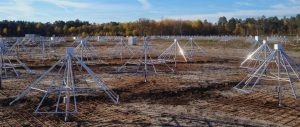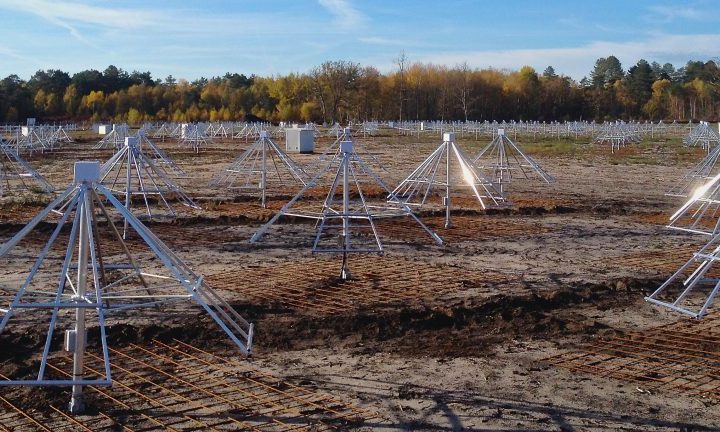
NenuFAR
NenuFAR (New Extension in Nançay Upgrading LOFAR) is the latest radio telescope built at the Nançay Radio Observatory. Its construction started in 2014 and obtained its first light in 2019 with 75% of its nominal collecting area. The entire array is expected to be completed in 2024. This radio telescope observes at the lowest radio frequencies accessible from the ground, between 10 and 85 MHz. It is a compact array of 1938 antennas, grouped in 96 + 6 mini arrays of 19 antennas. The 96 mini-arrays of the core constitute a phased array of high sensitivity (higher than the LOFAR core in the Netherlands) allowing spectro-dynamic studies of variable radio sources, such as pulsars, magnetized exoplanets, solar system planetary lightning, erupting stars or other transient phenomena, such as Fast Radio Bursts (FRB) or radio emission associated with atmospheric showers caused by very high energy particles or radiation. In imaging mode, one of the most exciting topics of the instrument is the mapping of the power spectrum of the 21-cm signal produced by the intergalactic medium during the dark ages of the universe at the time of the formation of the very first stars and galaxies
The LPC2E ASTRO team is heavily involved in three key science programs of the instrument. These are (1) studying the radio pulsar population and their multi-wavelength emission mechanisms and the measurement of the turbulence in the interstellar medium from the variations of the signal dispersion (see, e.g. Bondonneau et al., 2021); (2) the search for giant exoplanets through the interaction of their magnetic field with the wind from their host star; (3) the search for Fast Radio Bursts which are mysterious, bright radio bursts coming from extragalactic distances (Decoene et al., 2023). The team also strongly contributed to the instrument’s design, implementation, and verification. In particular, the ASTRO team designed the pulsar backend (spectral analyzer and coherent de-disperser) called UnDySPuTeD.

